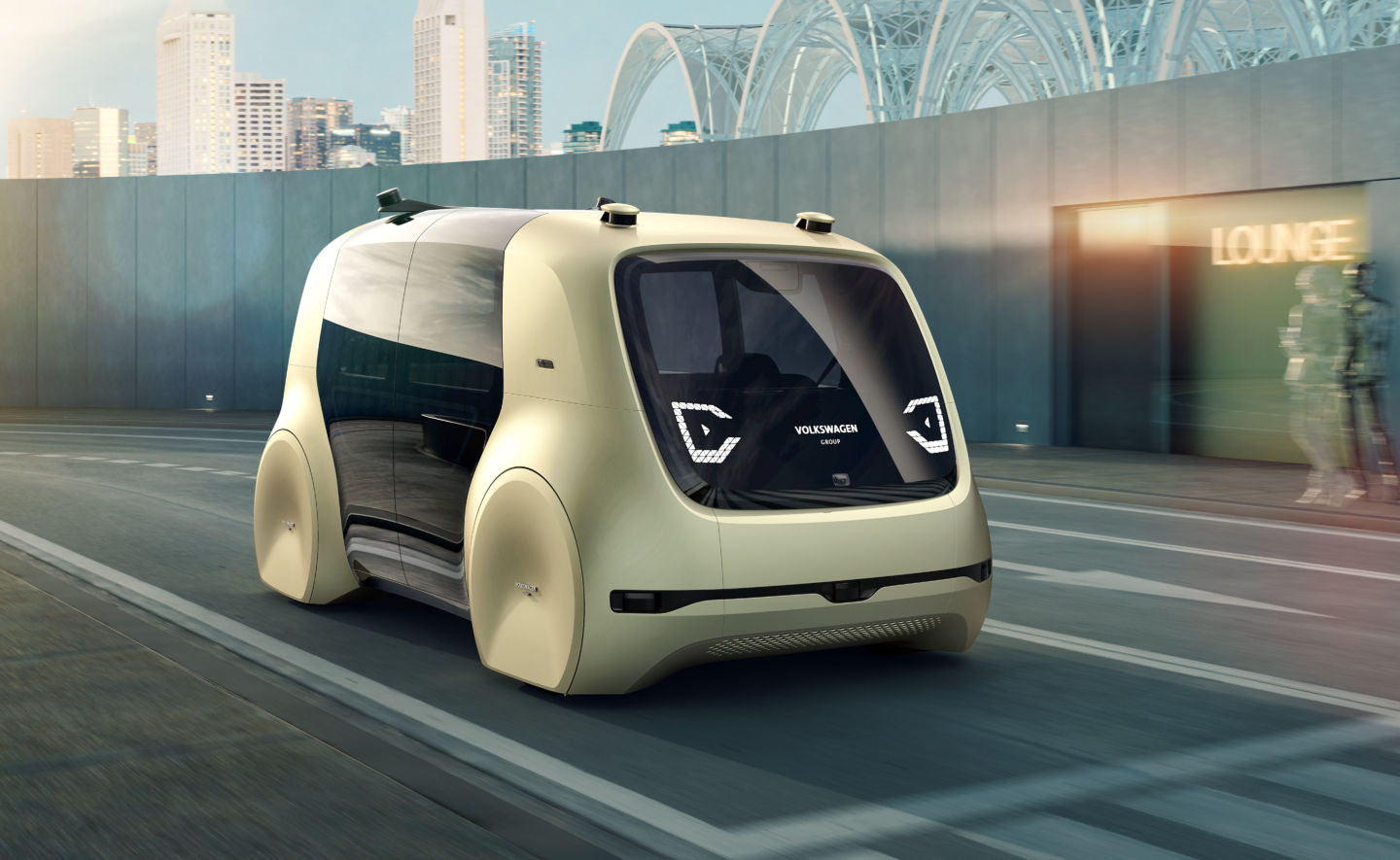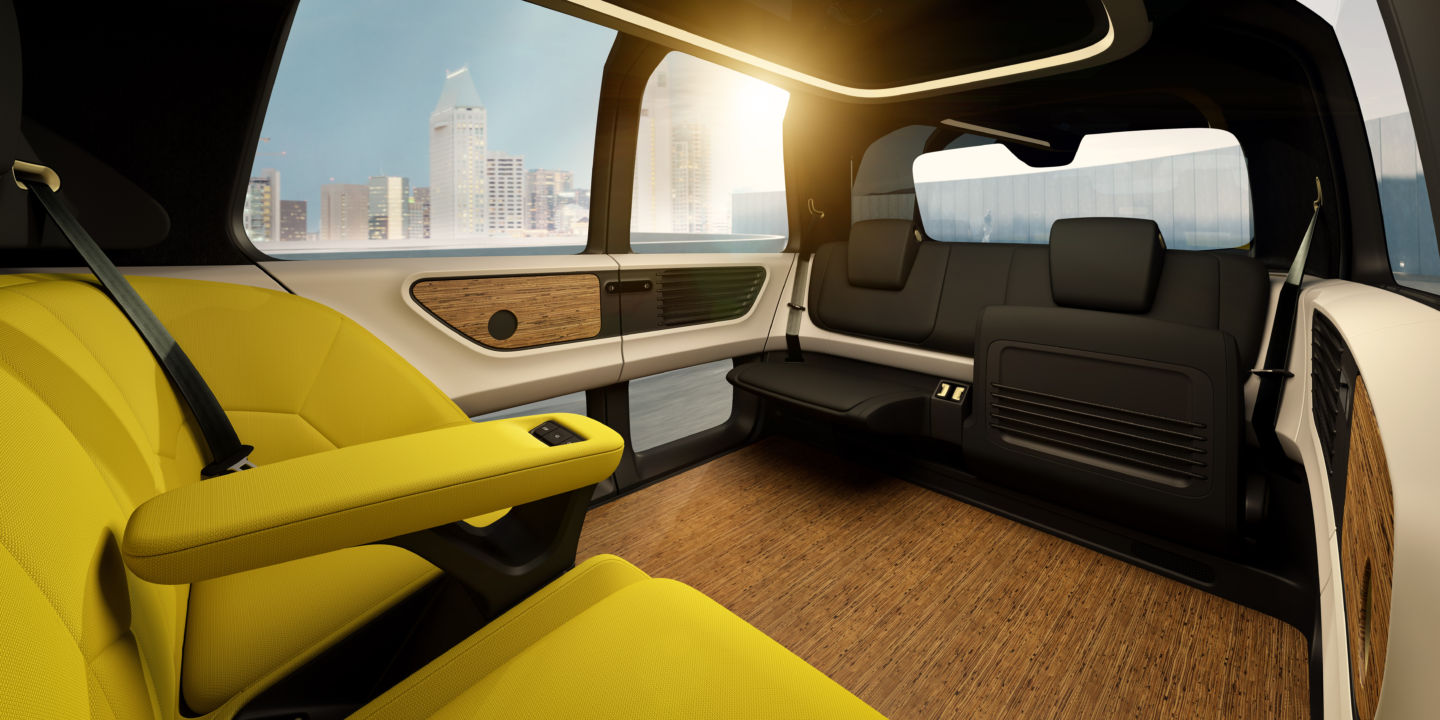Volkswagen’s plans to develop fully autonomous vehicles that would offer greater comfort and convenience than current cars, while slashing the number of road deaths and truly democratizing mobility, have borne their first fruit. This is Sedric, designed to be a platform for cross-brand ideas, which will feed into subsequent concepts from the group’s car brands. The biggest idea it introduces is its full “Level 5” autonomy: no human driver is required.

There’s no VW badge on the front of Sedric because this is the first concept car built by the Volkswagen Group, rather than the Volkswagen car brand. It was devised, designed, developed, and constructed by Volkswagen Group’s Future Center Europe in Potsdam and Volkswagen Group Research in Wolfsburg. “We are systematically focusing on our customers, their wishes and requirements for the mobility of the future,” says chief designer Michael Mauer. “The Volkswagen Group Future Centers give us the opportunity to conceptualize and develop new ideas of mobile life.”

Volkswagen sees Sedric as either a shared mobility system operating worldwide or a vehicle from one of the group’s brands that might be owned by an individual. Despite much talk in recent years about future mobility ushering in new ownership models, the company says it believes many people will continue to want to own their own automobile in the future.
The benefits offered by Sedric—the name is a portmanteau of “self-driving car”—are legion. It could drive children to school, drop their parents at the office, and then look independently for a parking space. It could collect pre-ordered shopping or meet you at the station or airport.
Volkswagen aimed to make Sedric very simple to operate, resulting in a remote control called The Button: pressing it summons Sedric and identifies the user when the car arrives. Two wide doors on each side slide open to reveal an airy interior with sofa-style seats facing towards the center.
There’s no steering wheel
Sedric has no steering wheel, no pedals, and no conventional cockpit controls or instruments. Volkswagen says this permits “a completely new sense of well-being in the vehicle—a welcome home feeling.” The seats are trimmed in birch leather, said to be a “haptic, natural material pleasant to the touch.” The front seats fold up to provide more floor area so the rear passengers can stretch out or to house luggage. Air quality is maintained using large bamboo charcoal air filters and a collection of air-purifying plants that sit in front of the rear windscreen. (That makes the Sedric the second concept car this year we’ve seen that features a mini garden.)
Once inside, operation is based on voice commands: you just tell Sedric where you want to go and the route you would prefer to take. Sedric responds with information on the journey time and the current traffic situation. Passengers—and since there’s no human driver, everyone’s a passenger—can sit back and relax or can engage more fully with the journey through a windscreen that is in fact a transparent, high-resolution OLED display. This can provide augmented reality data or can be used as an entertainment center.
Volkswagen has given only a glimpse of the technical specification of Sedric, but we do know it is a battery-powered electric vehicle with a flat battery pack mounted under the floor between the front and rear axles. There is a single drive motor, which we would expect is between the rear wheels—though in a car with no driver, concepts of “front” and “rear” start to become less important. The heating, ventilation, and climate-control systems and the sensing and control systems that drive the car are mounted in the short overhangs front and rear.
VW’s big electric vehicle plans
Johann Jungwirth, Volkswagen’s chief digital officer, says he believes Volkswagen will become a leading mobility provider by 2025 and will “in part become a software and services company” in the process. Announcing its plans a year ago Volkswagen quoted American computer scientist Alan Kay: “People who are really serious about software should make their own hardware.” As Jungwirth points out, Volkswagen already has decades of experience with the hardware.
Meanwhile, Ulrich Eichhorn, who took over as head of research and development for the Volkswagen Group in April 2016, says the company wants to be the market leader in e-mobility by 2018 and will launch 20 more electric vehicles by 2020. What’s clear is that Volkswagen is pushing hard to make diesel—and dieselgate with it—part of the past, and electric mobility not just the future but a viable present.
Listing image by Volkswagen Group
